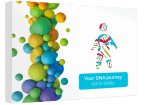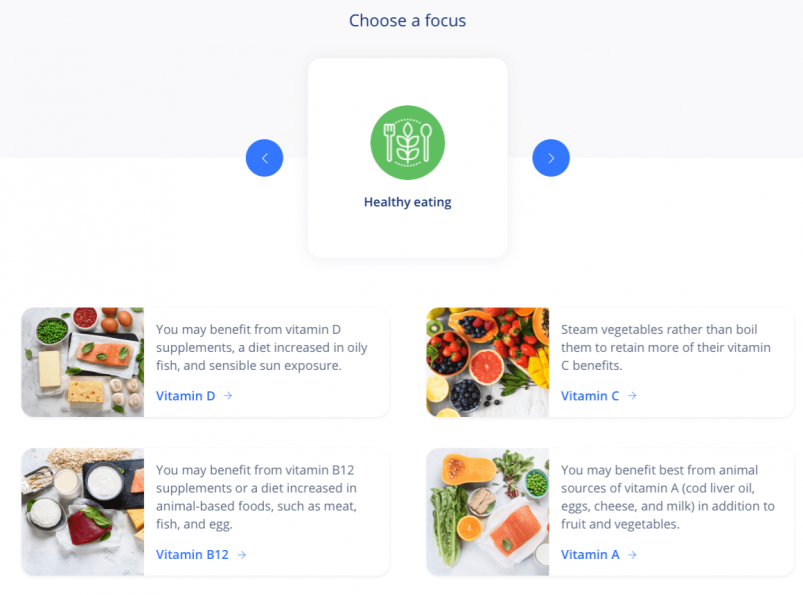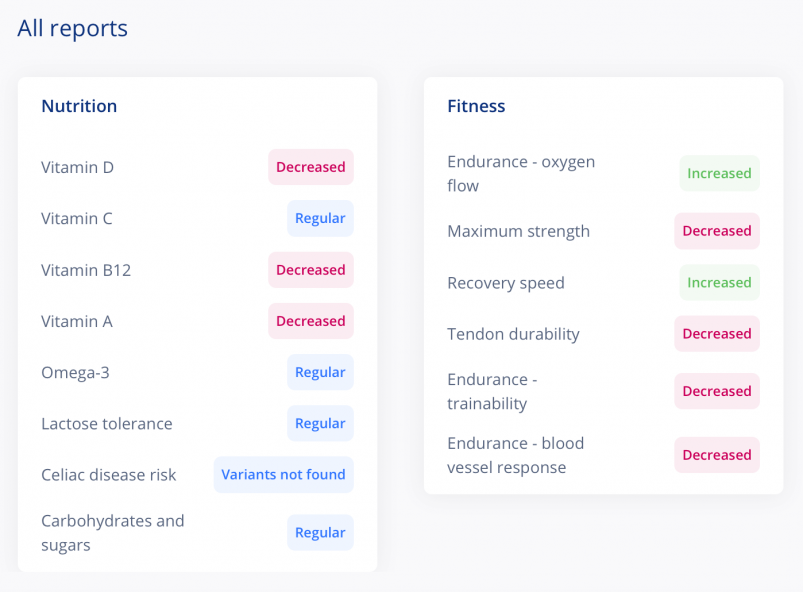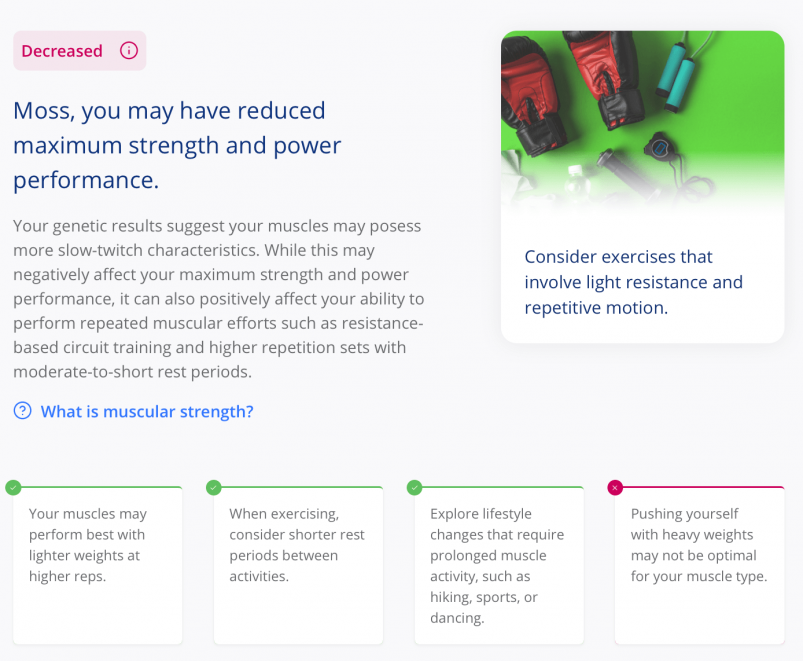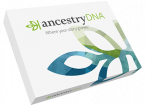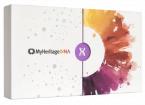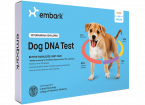LivingDNA Overview: Health and Ancestry Insights in One Test?
LivingDNA gives you a choice of three tests: Ancestry, Well-being, or a combined package that covers both. The Ancestry test maps your genetic roots across 80 regions, while the Well-being test looks at how your DNA may affect traits related to health. The combined option offers a more complete picture of both heritage and personal wellness.
A key feature is the ‘Family Networks’ option, which allows you to connect with relatives who have also taken the test. This makes LivingDNA one of the most comprehensive genealogy DNA services available. Whether you’re focused on exploring your family history or understanding genetic health risks, LivingDNA offers a test suited to your goals.
However, it’s important to note that LivingDNA is not without its flaws. Improvements could be made, such as faster turnaround times for results. I plan to explore these aspects and more in an upcoming review. Stay tuned for a detailed analysis of what LivingDNA has to offer.
Features
DNA-based ancestry reports typically offer insights into your ethnic heritage and geographical origins, primarily based on autosomal DNA inherited from both parents. Some services, including Living DNA, go further by analyzing Y-DNA for males and mitochondrial DNA for individuals of any sex, providing information about ancient paternal and maternal lineages. Additionally, these companies often leverage their databases to compare your DNA with others, potentially helping you discover relatives.
Now, let’s delve into what Living DNA specifically provides in these aspects and assess its effectiveness, starting with an exploration of their Recent Ancestry section.
Recent Ancestry
By “recent ancestry,” Living DNA doesn’t just mean a few generations; this report includes familial information for the past 500 years! In addition to telling me that I am 32.4% Germanic and 13.4% Northeast European/Baltic, the results also indicated that 28% of my ancestors came from the Near East (especially Turkey):
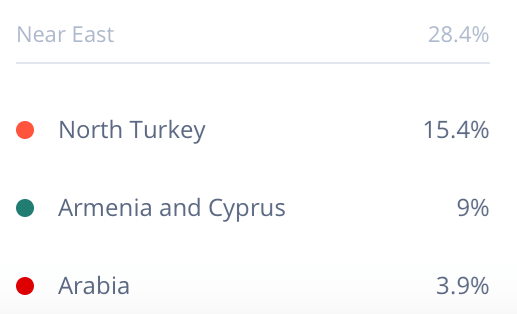
This is strange since other DNA tests have told me that I’m about half European (fine), half Ashkenazi Jewish (not identified here), and 3% Asian (not indicated at all). I know that my father’s side of the family is pretty much 100% Ashkenazi Jewish. There’s also plenty of anecdotal evidence that I have some East Asian heritage, which has been corroborated by other DNA tests I’ve taken.
For these reasons, I doubt the precision of Living DNA’s ancestry assessments. However, it’s important to note that Living DNA analyzes far fewer geo-regions than some of its competitors. AncestryDNA and 23andMe’s ethnicity estimates include 1,000+ geo-regions, while Living DNA’s reports only have 150. This is likely why these results seemed less accurate than what I had received in other reports.
One thing I really appreciated about Living DNA’s reports was the storytelling and historical context. You can click on any of the listed ethnicities to learn more about those historic populations. If you’re interested in your Neanderthal ancestry, you can get an upgrade and find out more about your history.
Maternal and Paternal Migrations
Analysis of my mitochondrial DNA (mtDNA) associates me with maternal haplogroup H (subclade H2a) which identifies ancestors who migrated around Europe, the Middle East, and Africa.
This agrees with analysis by 23andMe, so I conclude that both companies are probably correct.
My Y-DNA analysis places me in the paternal haplogroup J2 (subclade J-M92), tracing ancestral migrations across Iberia, the Middle East, and Africa. This finding is consistent with results from 23andMe.
I like the Living DNA’s visual representation which combines a textual historical narrative (on the left) with very clear pictorial population migration lines (on the right). 23andMe does something very similar with its presentations of maternal and paternal migration paths.
DNA Matches
This section, which Living DNA calls “Family Networks,” shows which other Living DNA customers appear to be biologically related to you (and how). You can view more details for each potential relative or attempt to contact them, but only if you’ve opted in for this service via the single-click opt-in button on your dashboard. LivingDNA’s Chromosome Browser is a tool designed for users to visually explore their genetic data across chromosomes. It allows you to compare your DNA segments with those of family members or others in the database, aiding in understanding genetic connections and ancestry.
LivingDNA’s Shared Maps feature provides users with a graphical representation of where their matches’ ancestors come from, enhancing the understanding of geographical and ethnic backgrounds. The Match Box tool in LivingDNA offers a space where users can view and manage their DNA matches, enabling them to see how they are genetically connected to others in the LivingDNA database. This tool aids in the exploration of familial relationships and ancestral connections.
My Story in Print
You have the option to purchase a printed book containing your Living DNA ancestry report along with contextual information. While 23andMe offers a similar service at a lower cost, most other companies don’t provide this option.
My book looked like this:
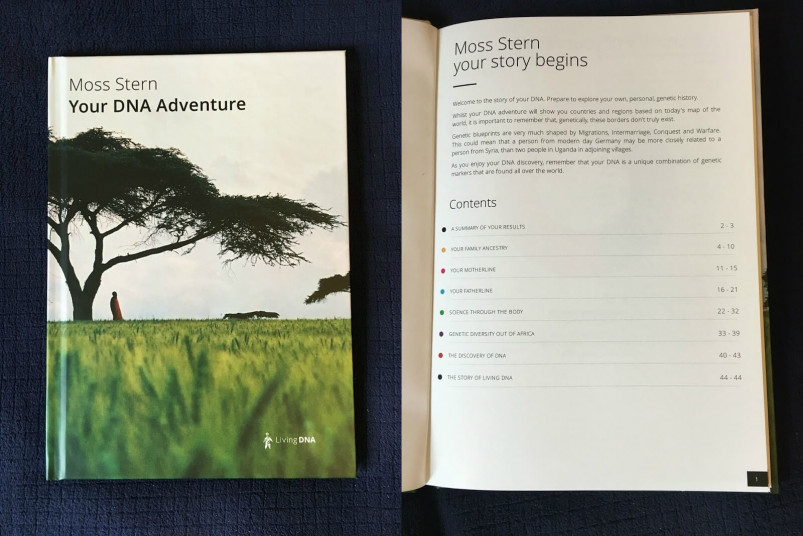
It would be an understatement to say that I was disappointed. The structure of the book partially parallels the online ancestry report, but advises “for the full list of your regional percentages, visit the Living DNA portal.”
What this means in practice is that the recent ancestry portion of my report focused on the “Near East” ancestry that I think Living DNA got wrong for me. The sections on my maternal and paternal haplogroups were pretty much the same as what was shown online.
The remainder of the book is the same for every customer. It discusses the history and science of DNA sequencing, the history of human divergence out of Africa, the story of the discovery of DNA, and the history of Living DNA. Naturally, I’d prefer more personalized content.
Value-Added Features
- Tests autosomal, mitochondrial, and Y-DNA. Many companies do not offer the latter two or charge separately for them.
- Includes migration routes and accompanying historical context.
- You can order a printed report, which you can’t do with most other companies.
Other Kits Available
- You can also buy a Wellbeing Kit (discussed next) either separately or combined with the Ancestry test.
How It Works
Taking any of Living DNA’s tests couldn’t be easier:
-
Order a test kit. Choose from one of the available options, depending on what you want to learn.
-
Create an account online. Follow the steps to create your own account where you’ll receive results.
-
Swab the inside of your mouth (having not eaten, drunk, or chewed gum for at least 30 minutes), then mail in your sample. That’s it!
After about six to eight weeks, you should receive an email telling you that your results are ready, which is a bit longer than it takes many competitor companies to tell you the same thing.
If you’ve already had your DNA tested by 23andMe, AncestryDNA, or MyHeritage, you can upload your raw DNA data to get a limited selection of Living DNA reports for free! That’s pretty cool. At the very least, you’ll be able to compare the different companies’ findings.
Plans & Pricing
Living DNA offers five purchasing options to choose from:
- The Ancestry Kit.
- The Wellbeing Kit is cost-competitive with other companies. The companies that cost more tend to provide greater insight and features, such as meal and exercise plans.
- The combined Wellbeing and Ancestry Kit is of good value compared with other companies’ combined tests. This package includes all of the information from the full ancestry and wellbeing kits.
- A raw DNA data upload option gives you results for free. However, you only get your ethnic data broken down into eight world regions and the ability to match with potential relatives. Nutrition and fitness reports are both listed as “coming soon.”
Regarding Wellbeing, I believe the report offers good value for the price. When it comes to Ancestry, though, I’d rather invest more to get better accuracy.
If you decide to purchase one of Living DNA’s test kits, you can pay via PayPal or using your Visa/Mastercard/American Express credit card.
Support
If you have any questions about Living DNA’s tests, the Support Center page looks to have more detailed, scientific answers than many other DNA testing companies. If you can’t find answers to your questions, you can call the company, send an email, or submit a support request.
Completing the form can be somewhat tedious, especially with the need to navigate through multiple CAPTCHA challenges. Despite this, I persevered and managed to submit my inquiries.
My first question was about the countries to which Living DNA ships their tests. The response I got was rather broad, suggesting I check the list of countries on their website for the information.
Regarding my last query, which concerned the delay in receiving my Wellbeing report, it was discovered that my DNA sample and Wellbeing test order had been misplaced by the company. As a resolution, they sent me a new test kit, allowing me to begin the process anew.
In summary, I’ve had better support experiences with DNA testing companies that have answered my questions more thoroughly and that have not lost my orders or samples.
Bottom Line
Living DNA offers some of the most affordable test kits on the market.
The Wellbeing report appeared to be pretty accurate and included an affordable summary of how your DNA might influence your diet and fitness regimes.
Unfortunately, the Ancestry report left me unsatisfied, thanks to its apparent inaccuracies regarding my heritage. It was disappointing, especially when you compare the report to what you would get with Ancestry. However, if you’ve already received a DNA test from AncestryDNA, MyHeritage, or 23andMe, there’s no harm in comparing your results for free.
In summary, while I probably wouldn’t order the ancestry test again, I would invest in the Wellness report.
FAQ
How accurate is Living DNA?
The accuracy of Living DNA’s ancestry test results depends on who is taking the test. The company is based in the U.K., and a large percentage of its customers live in the U.K. and Europe. Since DNA from those regions is very well represented in its customer base, Living DNA is able to estimate European ancestry with a high level of accuracy.
However, some populations are not well represented, and consequently are less likely to be identified accurately. For instance, half of our reviewer’s ancestors are Ashkenazi (i.e. European) Jews, and Living DNA completely missed this fact in its ethnicity estimate – while claiming that he had a significant amount of Turkish ancestry, when in fact he has none.
For its Wellbeing test, Living DNA looks at certain genetic markers known to be associated with traits such as propensity for weight gain, likelihood of having a particular vitamin deficiency, or likelihood of being lactose intolerant. While these findings may help you to better understand your body and more effectively achieve your wellness goals, they should be taken with a grain of salt. Having a marker for a particular trait doesn’t mean you definitely have that trait, and lacking a marker for it doesn’t mean you definitely don’t have it.
Can you upload raw DNA data to Living DNA?
Yes, Living DNA allows you to upload your raw data from AncestryDNA, 23AndMe, MyHeritage, and FamilyTree DNA. Once you’ve done so, you can access their family matching service for free, but will have to pay a small fee to receive certain other reports based on your data.
How do you interpret Living DNA data?
Living DNA’s ancestry report includes an estimate of which ethnicities lie in your family’s background, as well as which maternal and paternal haplogroups you’re most likely descended from. The company’s wellbeing report analyzes your genetic predispositions for endurance, exercise, diet, nutrient absorption, and other genetic traits.
How long does it take to receive results from a Living DNA test?
Once Living DNA has received your genetic sample, your results should be ready within 6-8 weeks. Our reviewer’s Wellbeing report took more than 11 weeks! By contrast, 23andMe promises results within 2-4 weeks, and our reviewer received his in a little more than one week.
Who should consider taking a Living DNA test?
If you’re looking for a thorough but affordable ancestry test, Living DNA may be an excellent choice. Unlike most other vendors, Living DNA’s ancestry test not only includes an ethnicity estimate but also traces your maternal and paternal haplogroups back hundreds of thousands of years. With that said, our reviewer’s ethnicity estimate from Living DNA was way off base, so it may not produce satisfying results for everyone. You might be better off with other top ancestry DNA tests, including MyHeritage and AncestryDNA.
Living DNA’s wellbeing test gives you a reasonably thorough analysis of how your DNA may affect your endurance, exercise, diet, nutrient absorption, and other genetic traits. Our reviewer found his wellbeing results far more accurate than his ancestry report. 23andMe’s health report covers many of these same wellness traits, but also explores your risk of getting certain diseases or passing others on to your children.

